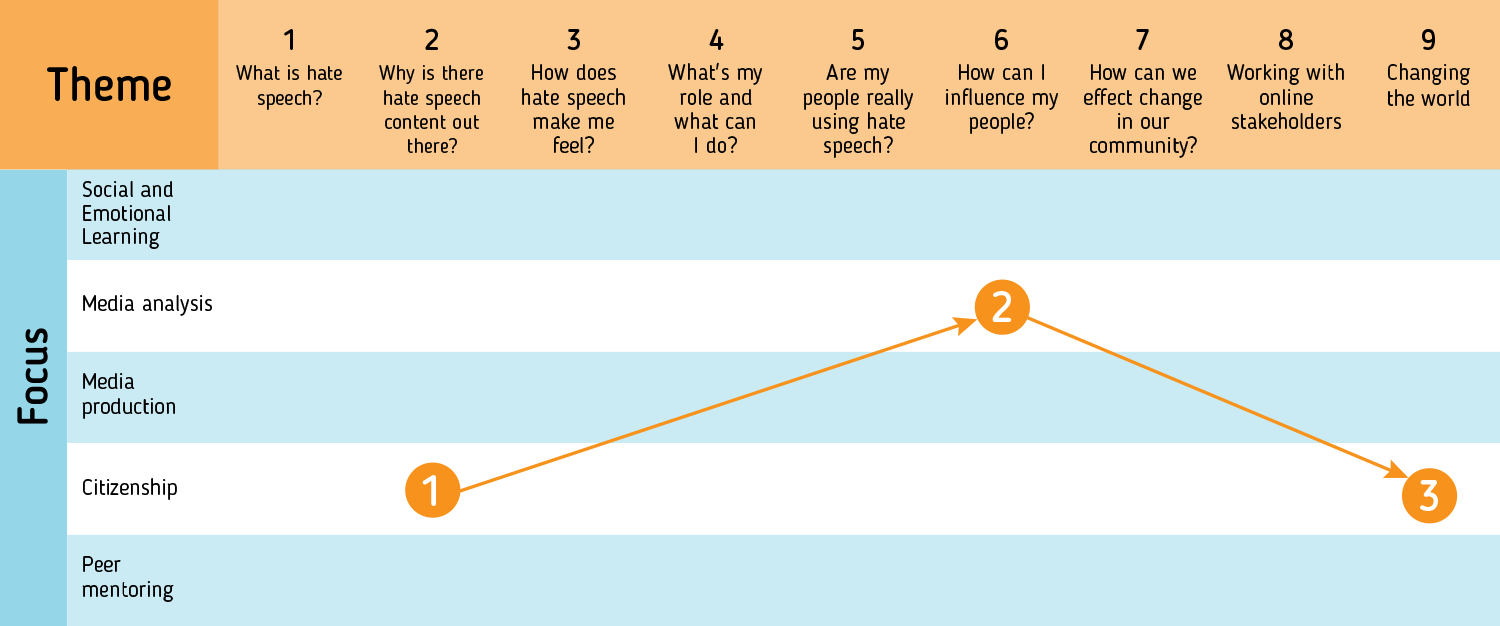Pathway 3: From mobilisation to movement
In order to come up with ideas or solutions against hate speech, young people first need to understand the phenomenon, how it makes people feel and how we can deal with it and counter it. The SELMA Toolkit enables young people to handle hate speech both on a personal level, as part of their (peer) group and on a societal level. The latter aspect is essential when you are ambitious, and truly aim to change the world.
In this section, we identify a number of SELMA modules which directly touch upon the mechanisms of online hate, and how social media platform features come into play, while offering some alternative solutions and strategies also.
Please note that by no means we are trying to be restrictive; SELMA has been designed as an open and flexible framework which gives you as much flexibility as you want or need to build towards effective and efficient pathways of change. The SELMA journeys we have articulated below have been developed for illustrative purposes.

This pathway will help young people to understand why media portray stereotypes and may help to promote hate. They will also learn how messages are spread and how they can turn this around to mobilise their peers. The last activity supports young people to build a community of supporters beyond their own community and effect change on a broader level.
More specifically:
- Step 1: The first activity in this journey is ‘Do media outlets use stereotypes in their content?’ (‘Theme 2’, ‘Citizenship’). It aims to support young people to challenge stereotypes or prejudice in the media by lobbying the media outlet provider. The Questions to Ask section offers input to start a discussion with your participants. You might also want to use current examples from the media. The slides offer some examples but you might want to update or adapt them to your local and national context. In the main activity, young people get to know the media market, think about different types of media companies and how they may use stereotypes for diverging purposes. Encourage your participants to use the suggestions for positive online behaviour and counter activities. Support them to reach out to media companies when you think they’re ready for it.
- Step 2: ‘Army of haters’ (‘Theme 6’, ‘Media Analysis’) helps learners to explore how promoters of hate speech act and how messages are often spread online by mobilising an army of haters. The activity then considers how this can be ‘flipped’ to mobilise an army of activists. The Top Trumps game can be used as a means to get learners “into the head of a hater” by understanding why and how a hate speech message is created and spread and how counter-narratives can be used to react.
- Step 3: This journey ends with ‘Mobilising your online community’ (‘Theme 9’, ‘Citizenship’). In this unit, learners develop an understanding of the roles within an activist community both online and offline, and the strategies that can be employed to develop people’s roles and responsibilities to create a sustainable programme of activism. The main activity helps them to build a supportive community to achieve their goals.
Pathway 3 aims to promote positive messages instead of hate speech and enables young people to set up their own agenda and reach out to others to join their movement. If you’re looking for additional information enter “Activism” in the SELMA toolkit search box to find other activities.
